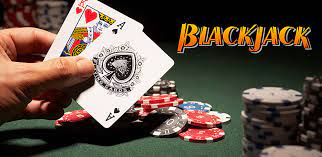Not everyone wants to hear about how to play blackjack games but everyone should learn at least one card strategy if they want to stand any chance of winning with blackjack. Although there are many different levels of playing blackjack through the years, the most basic blackjack strategy can still be employed to some small extent to beat the odds and stop gambling further. Learning the basic strategy and expanding it slowly can give the player a felt head start towards beating the odds and winning at blackjack.
Expanding Your Blackjack Strategy
Although there are many different strategies available, the simplest way to improve your odds is to learn a new strategy, one that has been proven statistically to be an excellent way of increasing your odds. Some players tend to expand their strategy and take it to the next level by supposing what the next game in the series will be, or what the dealer will have by the next hand, or what the game will be with the new cards. Expanding could mean that you will always play with a minimum of two decks, or more.
Encrypting or Splitting the deck
The most controversial techniques at this point are either splitting the deck into two piles and re-splitting the cards or using the arbitrage method and determining what the correct strategic move is, whether it be to stand, hit, surrender, etc. Although there are many strategies that can be used to decline the odds, these are just a few of them. The more complicated and risky methods of counting cards are definitely Here to stay.
Counting the cards in a single deck
The single deck method is the most basic and the most trusted method of counting cards. When you are learning how to count cards, it is best to look at concepts from this perspective. As you count the cards, you know immediately how high or low the cards are. Each card you see is assigned a “level” and you base how high or low the card is that you see on this number. Learning this level concept is the best way to keep cards in your hand. It does not matter if you are used to counting cards on another system. Although the number of cards is the same, this method is a “level one” concept.
Levels of Card Counting: Low, High and Banker
As a card counter, you want to keep track of the running count. This count is the total of the cards remaining in the deck. You call this the “Vodka138.” There are several different heights that you may base the count on. The most common is 2, 3, 4, 5, 6 and 8. The values assigned to the various cards are demonstrated below.
- 2’s, 3’s, 4’s, 5’s, 6’s = zero (0)
- 7’s, 8’s and 9’s = plus 1 (1)
- 10 Cards, Jacks, Queens, Kings = plus 2 (2)
- Ace and Ace = plus 3 (3)
- King and King = plus 4 (4)
The counter then adds 1 to the running total as each new card is dealt. The running total is reset to zero once the deck is shuffled. For each card played, you add a corresponding value to the running total until the count is zero. The higher the plus sign, the number more cards are in the deck and the higher the likelihood of more cards coming out. Remember that cards are dealt in order and a card counter must count all cards, therefore, it is important that you keep track of the running count.
If the running count reaches 8 or more than you know you have a very high count, this is an indication of a very strong deck. beginners may place a bet or limp in to see a flop or click away from the bets to see the next card, however, seasoned players know that a deck rich in low cards is a deck with a higher probability of receiving a blackjack.
The Running Count & Card Count
The running count is basically the count you keep as you play. It is an indicator of the ratio of high cards to low cards in the deck. When the deck is 56 cards, the running count will betental 1. If the running count is plus 1, you have a lower ratio of high cards to low cards than the previous deck. The deck becomes more balanced when the running count is zero.On a plus 1,000 count, there are 3, associations (2 face cards = 2 tensals) or 82 more cards, accounted for.
The running count is directly proportional to the number of ten cards in the deck. The higher the running count, the more tensals are in the deck. As a card counter, you want to keep a running count as high as possible. The higher the running count, the more tensals, as the ratio of tensals to small cards becomes greater.
